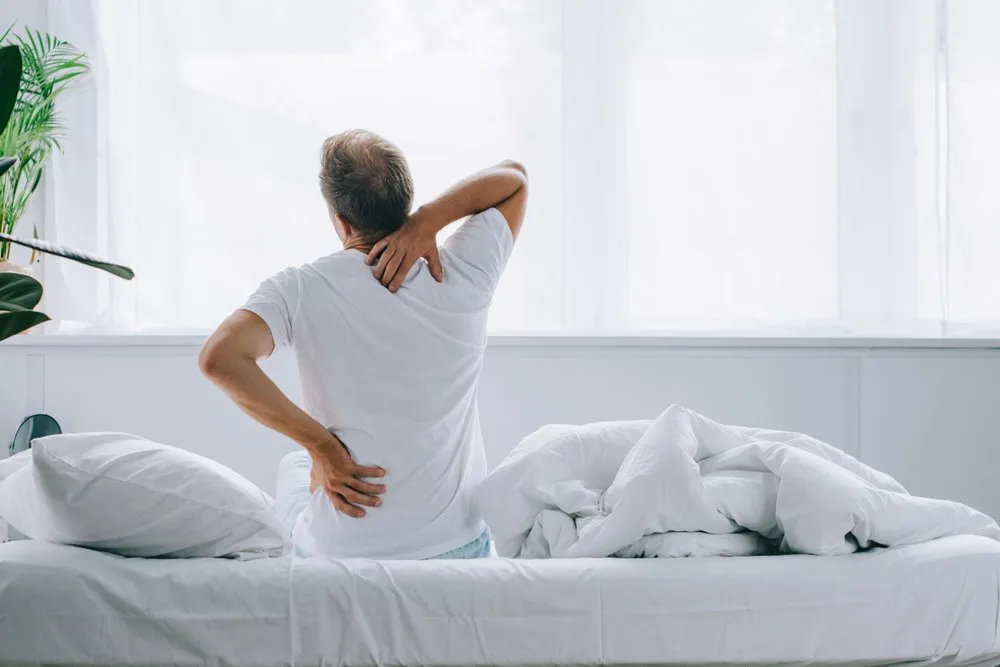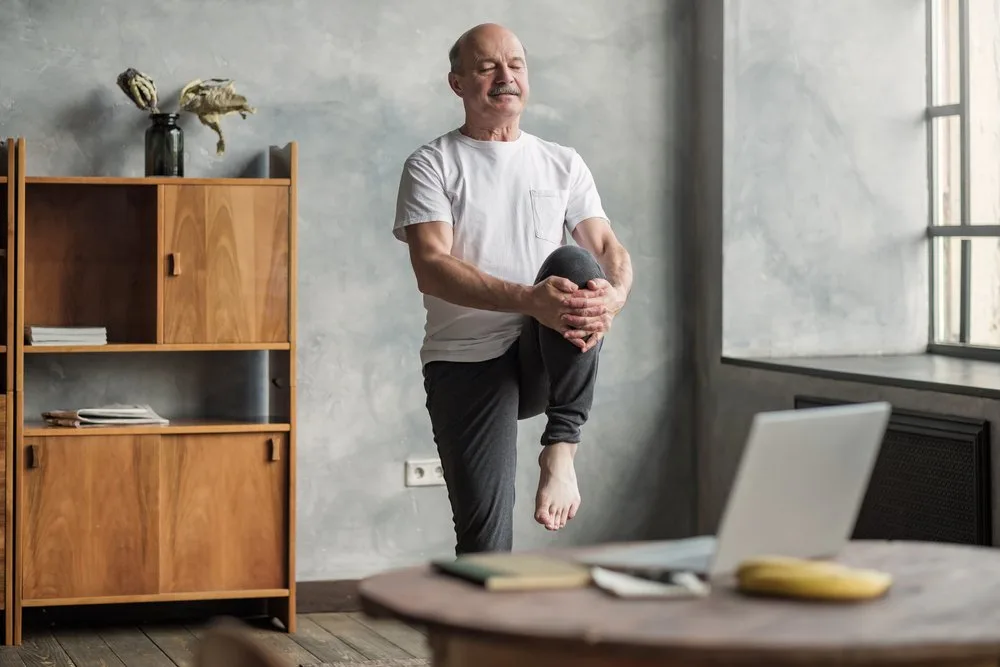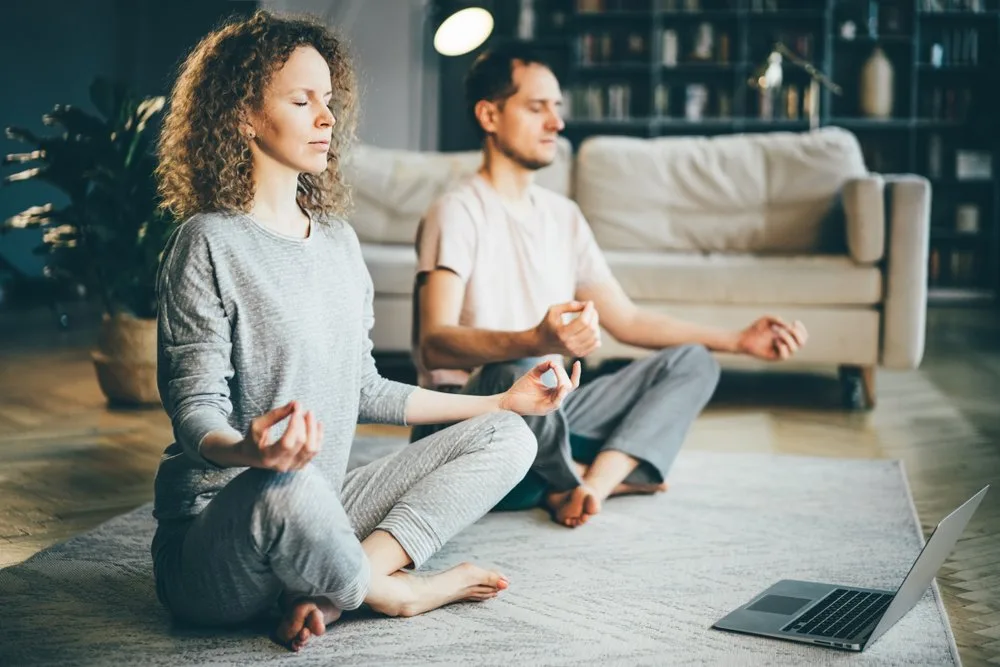Believe it or not, the human body is remarkably resilient and most of its complex working occurs without our cognition. We move through daily life unaware of the workings of this complicated ecosystem until it gets disrupted that is.
The truth is that Covid-19 has brought disruption to daily life and to our bodies. Perhaps more significantly, it may have brought back pain.
Let’s take a look at how it might have impacted you…
On the one hand, your life may have become more sedentary; perhaps your daily commute now involves walking from your bedroom to your kitchen, your lunchtime yoga session has been swapped for half an hour on the sofa and your interactive group meetings now take the form of hour-long video chats with you sitting at the kitchen table.
On the other hand, you may have extra time with more frequent, intense, or new types of exercise. Maybe you signed up for online yoga sessions, are one of the thousands of people who invested in at-home gym equipment, decided to pick up marathon training, or even throw yourself into gardening or DIY.
No matter which category you fall into, this sudden disruption to our bodies has been causing many to experience non-specific lower back pain which leads to additional problems such as stiff necks, sciatic pain, migraines, sore muscles, and stress.
What is non-specific lower back pain?
Non-specific lower back pain i.e. a pain that is not due to serious disease and where the exact cause of the pain is unclear is a complaint that we have observed in our practices a great deal recently.
As you might imagine, the causes of this pain are very varied. One commonality, however, is that almost all lower back issues tend to result from an increased volume, intensity, and frequency of some form of activity, which, if managed appropriately early on, could have been prevented.
With many countries now experiencing a second wave of lock-down measures, it is important to prioritize taking care of both your body and indeed your mind.
Follow these five, easy to action steps, to help prevent a small niggle from turning into something more serious:
1. Commit to a warm-up with dynamic stretches
No matter what type of exercise you do, or how busy your day is, it is important to schedule in a sufficient warm-up and cool down. You may do harm to your body or provoke injury if you skip this process.
Dynamic stretches mimic the movement of the activity or sport you are about to perform. It is likely you’ve seen swimmers circling their arms before diving in the water and track-athletes doing a set of walking lunges before competing. This movement-based stretch will lengthen soft tissues such as muscles and ligaments and will increase your range of motion.
Your stretch routine should be based on your individual needs and capabilities. Anna Cousins, online PT, and virtual trainer explains, “I use a lot of dynamic stretching in my workouts, it’s a much safer method, and achieves better results than static stretching. The benefits of dynamic stretching include more power, fewer injuries, better coordination or balance, and efficient neuromuscular activation.”
2. Make your progress steady
If you push your body too hard, you may experience injury problems down the line. This could then set you back on your long-term training plan. Progress comes with patience and training with good form and technique will help you reach your goals.
If your goal is to increase the amount of exercise you do, ensure that you increase the frequency, intensity, and volume at a steady pace – one that doesn’t send your body into shock. If, for example, you are used to running one 5k every week, avoid jumping into a 30-minute 5k run every day. The key is to gradually increase the volume of your run over time. If you do experience a niggle or pain in your body, listen to what this is telling you, modify your workout, and drop to a lower intensity exercise.
3. Rank your pain level
Practice listening to your body and responding to the message it’s giving you. If you experience pain, pause and take stock of how bad it is by asking yourself questions like:
- Is the pain preventing me from doing everyday things like walking up the stairs?
- Is the pain constant or does it come-and-go?
- Does the pain interrupt my sleep?
If the pain you have is stopping you from conducting everyday tasks, you should seek professional medical help immediately. If your pain is mild, consider options such as moderating your workout from high-intensity to low-intensity. You should also look to use ice, heat, or relief balms after a workout to help get your body niggle under control.
4. Avoid sitting for hours-on-end
Lower back pain can result from even the most sedentary of activities. It is irrelevant to how fit or strong your body is. The biggest culprits of pain include spending periods of time in less ergonomic positions. An example of this is working on a bench-chair at your kitchen table or sitting on a sofa with your feet raised. Even if you do have a supportive desk set-up, sitting for prolonged periods is not considered good for mental or physical health.
Seek professional advice on how you can create a more ergonomic workspace and ensure you take regular breaks that involve removing yourself from the space you are in. Also, don’t forget to leave the room and make a cup of tea, perform stretches, and relieve your body with movement.
Working from home may now be a more permanent or frequent fixture in your life. It’s likely you are moving less without a regular commute or office routine. Acknowledging this is the first step, the second is being proactive in ensuring your body moves.
5. Make stress-reduction a priority
Stress and anxiety can make back pain worse. You should look to seek professional advice if you are feeling particularly stressed about your pain.
To help ensure your pain is kept-at-bay, incorporate mindfulness or meditation into your daily routine. Taking time to focus on yourself can help reduce the build-up of stress and can often alleviate back issues. Plus, with a good self-care routine in place, you should feel more in tune with your body. This will allow you to identify any issues before they turn into something more.
Want to know more?
Take this fun quiz to find out if you’re at risk of your lockdown niggle becoming a bigger problem and remember if you are unsure of how to manage pain or have any concerns, seek help from a healthcare professional.
An active lifestyle really is the key to a healthy body – and of course to a healthy mind, too.
Who is the author?
Ann qualified from the University of East London. She has worked in the large London teaching hospitals including Kings College Hospital. She has treated a wide variety of musculoskeletal conditions including spinal pain, soft tissue injuries and post-operative rehabilitation.
Ann has worked with Crystal Palace Football Club’s Academy teams. She has also worked with the English Institute of Sport Weightlifters. She has experience with acute sports injuries and sports-specific rehabilitation/injury prevention.








![women [longevity live]](https://longevitylive.com/wp-content/uploads/2020/01/photo-of-women-walking-down-the-street-1116984-100x100.jpg)









